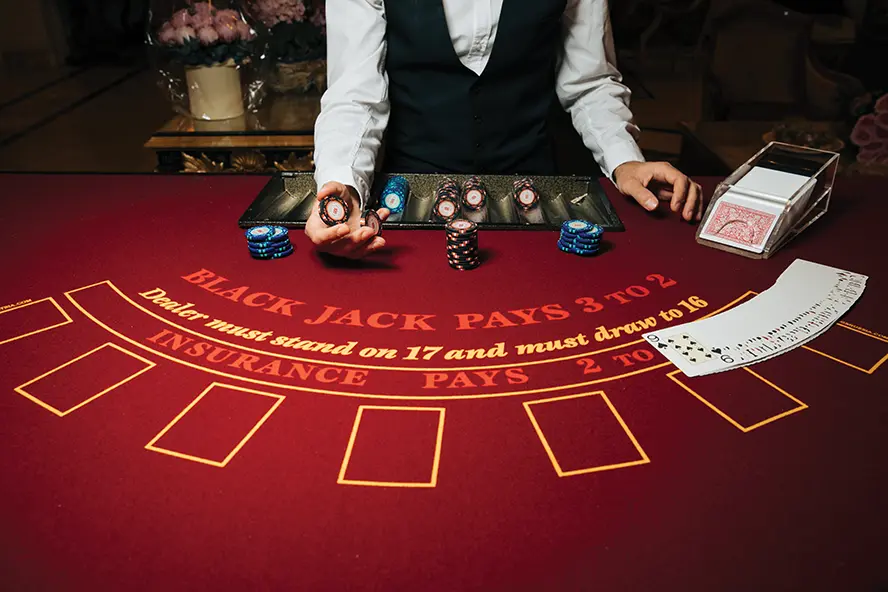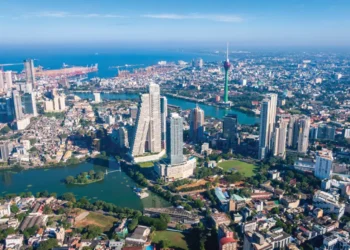IAG’s Vice Chairman and CEO Andrew W Scott outlines why he sees the world’s land-based gaming industry as one very much on the rise – a stark contrast to those who decry it as a sunset industry.
Here at IAG we’re always delighted to receive feedback from our readers. It comes through a variety of channels such as our LinkedIn page, in-person industry events or even just plain old email. Such feedback helps to shape our thinking on industry coverage.
 We recently received some feedback to the editorial of the May issue of IAG, which was written by our Managing Editor Ben Blaschke. The editorial, titled “Japan: Is something better than nothing?”, lamented the fact that what we will ultimately get in Japan will likely be so much less than what could have been.
We recently received some feedback to the editorial of the May issue of IAG, which was written by our Managing Editor Ben Blaschke. The editorial, titled “Japan: Is something better than nothing?”, lamented the fact that what we will ultimately get in Japan will likely be so much less than what could have been.
Here’s the feedback, slightly edited for brevity and clarity:
I am from Japan, based in Las Vegas and have been in the gaming industry since 2005. Personally, I also have a “not very optimistic” view for Japan. Recently, I came across Mr Kenichi Ohmae, a globally famous management consultant, who is also skeptical about MGM Osaka. As well as doubting MGM’s ability to attract enough high rollers, he describes the casino industry as a twilight industry, very different from an emerging industry.
I will leave the issue of attracting high value players for another day, but I’d like to address this proposition of casinos being a “sunset” or “twilight” industry.
This idea has presented with some frequency in recent years. The argument usually goes something like this: “Kids and young adults these days are more interested in video games, social media and other online activities than baccarat, other table games or slots, which are really an ‘old people’ activity. As time goes on, casino gaming – at least at land-based venues – will die.”

As seductive as this argument may appear, I disagree entirely. I’d like to offer four separate pieces of evidence to support the contention that casinos are not a sunset industry.
Casinos are no longer casinos
The first of these is that in this modern era, casinos look less and less like casinos. The term “integrated resort” (IR) might have originally been a bit of linguistic sleight-of-hand to persuade governments to allow casino gaming, but today the term genuinely reflects reality. While casino gaming floors are undoubtedly the economic engines of modern-day IRs, the current practice is to not put the casino front and center. IR operators heavily promote their other resort offerings – F&B, five-star hotels, entertainment, architectural features, water and theme parks, MICE facilities and many more. While these might have once been window dressing, non-gaming resort offerings are increasingly driving visitation of a customer base with maturing tastes. And given the homogeneousness of casino gaming, it’s everything else that differentiates IRs from each other to create what the marketing folks call a USP (unique selling proposition).
 Remember the VCR?
Remember the VCR?
Secondly, I’d like to invoke the “VCR phenomenon” argument from the 1980s. This was the decade that the video cassette recorder (VCR) became ubiquitous, with almost every household in developed nations having a VCR in the lounge room hooked up to the family television. It gave rise to a behemoth movie rental industry, dominated by Blockbuster video. Naysayers heralded the death of cinema, claiming that people would no longer bother to get dressed, buy a ticket and view scheduled movie screenings at cinemas, when they could much more conveniently rent a video cassette and watch the movie in the comfort of their own home.
Counter-intuitively, this argument proved utterly false! In fact, the opposite occurred. The ready availability of movies powered a movie industry resurgence unseen since the days before television, with movie fans becoming much more interested in the “art of cinema”, following their favorite actors and directors, becoming captivated by cinematic styles and so on. This ultimately led to a boom in cinema attendance which continues to this day, with dedicated movie-goers wanting to watch films in an undistracted environment and in the format that directors originally intended – on the big screen with cinema-quality surround sound.
 What’s this got to do with gaming? Well, I contend that the growth in online gaming that is occurring and will continue to occur – whether governments like it or not – will ultimately drive interest in playing games of chance in opulent surroundings and on green baize. Just look at how online poker powered the rampant growth of the live version of the game, such as the World Series of Poker (WSOP) in Las Vegas every summer.
What’s this got to do with gaming? Well, I contend that the growth in online gaming that is occurring and will continue to occur – whether governments like it or not – will ultimately drive interest in playing games of chance in opulent surroundings and on green baize. Just look at how online poker powered the rampant growth of the live version of the game, such as the World Series of Poker (WSOP) in Las Vegas every summer.
When everything is online, what’s left?
My third argument continues with the theme of the omnipresent shift from the offline world to the online. Accelerated by the COVID-19 pandemic, almost everything seems to be going online, including things that once might have been thought impossible. Every hot new business seems to involve technology and the mobile phone – which has long ceased to be a phone! Banking, communication, dating, education, health care, the media, retail, working – the list goes on and on and on. Do you see where I’m headed here? Ultimately, everything will be online. There won’t be a single thing you need to do that you can’t do online.
Once we get to that place of utopia or dystopia – depending on your point of view – what will be left for the offline world? Only one thing – leisure. People will only do things offline that they choose to do, that they enjoy, that they see as fun! And that’s exactly what IRs are, places of leisure and fun.
 Follow the money
Follow the money
For the fourth and final piece of evidence against the “casinos are a sunset industry” assertion, you need only study the history of IRs globally, and in Asia in particular, over the past two decades. Pandemic aside, they have been booming, and continue to boom, with no end in sight. Twenty years ago, Macau had only one operator – the Stanley Ho founded STDM. The Philippines had a few run-down PAGCOR properties. There was no Singapore industry at all. Fast forward to today and look at Cotai in Macau, Entertainment City and Clark in Manila, and the MBS and RWS duopoly in Singapore. And don’t forget the additions of Crown in Sydney, Paradise City in Incheon, City of Dreams in Cyprus and NUSTAR in Cebu, all indisputably built to follow the modern IR model.
 Add to this the fact that most major IR companies are expanding: Phase 3 and 4 for Galaxy, numerous upcoming phases for the other Macau operators, Solaire North and Cavite plus Westside in Manila, the rise of Clark properties (particularly Hann Casino Resort), more properties on the books at Incheon in Korea, major expansions of both MBS and RWS in Singapore, MGM Osaka in Japan, hype about five new IRs in Thailand, and Naga 3 in Cambodia. It seems like every jurisdiction in Asia wants to join the party! All this represents an investment approaching US$100 billion, a stupendous amount in anyone’s language. Do we really think smart investors continue to pour this kind of cash into an industry on the way out?
Add to this the fact that most major IR companies are expanding: Phase 3 and 4 for Galaxy, numerous upcoming phases for the other Macau operators, Solaire North and Cavite plus Westside in Manila, the rise of Clark properties (particularly Hann Casino Resort), more properties on the books at Incheon in Korea, major expansions of both MBS and RWS in Singapore, MGM Osaka in Japan, hype about five new IRs in Thailand, and Naga 3 in Cambodia. It seems like every jurisdiction in Asia wants to join the party! All this represents an investment approaching US$100 billion, a stupendous amount in anyone’s language. Do we really think smart investors continue to pour this kind of cash into an industry on the way out?
While some may proclaim a setting sun on the bricks and mortar version of our industry, I don’t see it. All I see is a series of dawns. May the sun continue to rise!




























